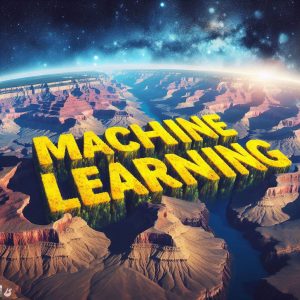Thanks to AI, our lives have become easier in many ways, spanning from medical to industrial applications. We can’t deny the significant benefits humans derive from AI. Although humans are inherently great, let’s not forget that we are not perfect, just like AI. We experience fatigue, become sloppy, and make mistakes—it happens. However, the integration of AI has proven to be a valuable asset, compensating for our imperfections and enhancing various aspects of our daily lives.
For years, we have been using AI. We may just not be aware, but one of the most familiar AI systems—machine learning—is the force that determines what ads to show, guides you while driving, and handles tasks such as generating marketing automation. On the other hand, Generative AI or Gen AI has added to the marvelous works of AI. Instead of just having to automate what ads to pop up on the screens, it made more complex decisions like crafting content such as an ingredient, article, or email or even generating an image.

Talking about AI. One of the most popular AI that’s been used is ChatGPT. ChatGPT, a Large Language Model (LLM) by OpenAI, operates through pre-training on extensive datasets and subsequent fine-tuning for specific tasks. Utilizing a transformer architecture with attention mechanisms, it tokenizes input text and understands the context for generating coherent responses. The model’s adaptability allows fine-tuning for diverse applications. Despite its ability to provide context-aware replies, it lacks an inherent understanding of the world and may produce plausible but inaccurate responses. OpenAI implements safety measures to address potential misuse. In essence, ChatGPT demonstrates the versatility of LLMs in natural language understanding, making strides in chat-based interactions, content generation, and question-answering.
What are the LIMITATIONS OF AN AI?

As we have delved into what AI does, let’s now go over what it can’t do — as even the most advanced robots are incapable of replicating them, and it’s likely they never will. So, if you aim to outpace robots, ensure you possess at least a few of the following skills.
EMOTIONAL INTELLIGENCE
Emotional intelligence, or EQ, involves the ability to comprehend and control emotions. It guides you in knowing when to stay silent or express yourself and enables you to gauge a situation without coming across as robotic. The challenge lies in many individuals having low EQ and struggling to grasp their emotions or the emotions of others. While robots can mimic emotions, true understanding eludes them.
Despite the marvels of generative AI, it is crucial to temper our expectations with a sober acknowledgment of its boundaries. In our quest for comprehension, it becomes evident that the sophistication of generative AI, while adept at emulating human behavior, falls short of truly replicating our complex social interactions, creativity, and empathy.
Generative AI may be biased.
Generative AI is biased based on the data it’s trained on. The implications of biased generative AI are manifold and potentially problematic, raising concerns about fairness, equality, and societal impact. Here are some key points to consider:
Perpetuating harm:
- Reinforcing stereotypes: If trained on data containing historical or current biases, the AI can mimic and amplify these biases, leading to harmful generalizations and perpetuating inequalities. For example, AI-generating news articles might favor male sources or portray certain ethnicities in stereotypical ways.
- Discriminatory outputs: Biased AI can inadvertently create discriminatory outputs, leading to unfair treatment in areas like loan applications, hiring practices, or criminal justice. Imagine an AI used in facial recognition technology showing higher error rates for specific demographics, potentially leading to false identifications.
- Exacerbating existing inequalities: By reflecting and amplifying societal biases, generative AI can further disadvantage already marginalized groups and hinder progress toward inclusivity and equality. This can have long-term consequences for access to resources, opportunities, and even basic rights.
AI Hallucinations
Errors and biases in the training data can be picked up and amplified by the AI model. For example, an AI trained on biased news articles might perpetuate those biases in its own outputs. AI hallucinations can spread misinformation and perpetuate harmful stereotypes, leading to real-world consequences. Human oversight and fact-checking remain essential to identify and address AI hallucinations before they cause harm.
Conclusion:
There are human tasks that remain unique to us, and AI necessitates extensive training data to learn. Imagine if teaching toddlers involved enduring a million “why” questions instead of just ten; it’d be quite exasperating. Fortunately, professional growth doesn’t demand watching a million customer calls. Despite AI’s potential to perform the work of a million adults when a toddler matures, the trade-off between limitations and benefits is a constant in AI. Leveraging your uniqueness gives you an edge over AI, competitors, and colleagues. Proper AI supervision, keeping a human in the loop, and mindful data usage are crucial. Transparency in communication and the application of common sense ensure effective AI utilization.
